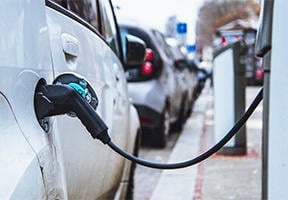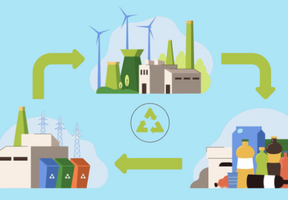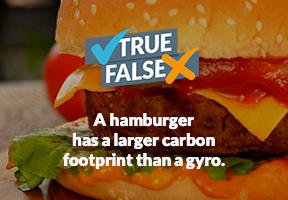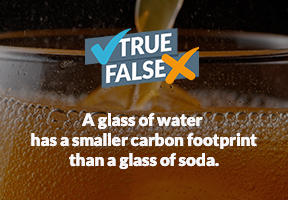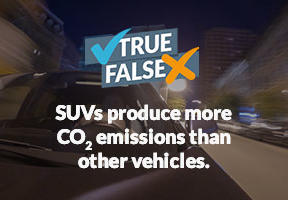Renewable Energies
10 min read
Renewable energies (hydro, solar, wind and , as well as ) are undergoing intense development throughout the world, with advances driven by the need to fight and reduce emissions.

© - Renewable energies are undergoing intense development worldwide, but still represent just a small minority of the energy mix. © THINKSTOCK
What is renewable energy?
Energy is considered renewable when it is produced from a source that is constantly replenished by nature, as opposed to a finite resource. Although highly diverse, renewable energies all come from two main natural sources:
- The Sun, which emits rays of light that can be transformed into or , causes the high and low temperatures and pressure areas that create wind, drives the water cycle and enables plant growth and biomass formation.
- The Earth, whose internal heat can be recovered at the surface.
Among the benefits of these energy sources are the fact that they are renewable and emit only small quantities of waste, pollutants and greenhouse gases. On the downside, they are relatively diffuse, meaning they have a much lower power density than their highly concentrated non-renewable counterparts. They can be "intermittent" – as is the case for solar and wind power – and difficult to store because they are instantly transformed into electricity, requiring occasional back-up from other energies. And they require substantial capital outlays, even if they are closing the competitiveness gap with fossil fuels over time.
The development of renewable energies is one of the three pillars of climate action, alongside and sufficiency
What are the different types of renewable energies?
- Hydropower from large-scale dams is currently the No. 1 source of . Leading the industry are China, Brazil, Canada, the United States and, perhaps in the near future, Africa.
- Solar energy can be produced in two ways. Photovoltaic solar technology converts sunlight into electricity using panels made of cells, whereas solar thermal technology captures the sun's heat and uses it directly or converts it into and, in turn, electricity.
- Wind power has made progress both and thanks to regular improvements to the technology.
- The various forms of ocean energy used today are generated by the force of waves, currents and tides, temperature differntials in the ocean and certain interactions between seawater and freshwater (osmtic energy). Ocean energy is still in the early stages of development.
- Biomass is made up of all matter derived from living organisms, be they plants (including microalgae), animals, or fungi (mushrooms). For centuries, wood was burned as the main source of energy, before being overtaken by , then oil and natural gas. But there are other ways to use biomass. Methanation produces from municipal or agricultural waste, while plant-derived biomass can be refined to produce biofuels.
- Geothermal energy captures the heat of subsea aquifers, or even hot dry rocks, at varying depths and uses it to supply heating to urban districts, buildings and factories, or to produce electricity in power plants. Countries in favorable environments, such as the volcanically active islands of Iceland and the Philippines, harness the power of geothermal energy on a mass scale. Heat from other sources can also be captured and used in district heating networks and industrial processes.
Nuclear energy is not considered renewable because its feedstock, , is only available in finite quantities – at least at economically viable costs. Nuclear fusion, however, could provide an inexhaustible source of energy if it were ever achieved on an industrial scale.
The largest wind turbines stand some 170 meters tall, with rotor diameters exceeding 150 meters.
How widespread are renewable energies?
Renewable energies across the board are currently being improved, but not all have reached the same level of maturity.
One of the most spectacular developments in the last decade has been the rapid increase in photovoltaic solar capacity worldwide, a trend made possible by the steep fall in production costs per kilowatt-hour. While Germany was the longtime leader in this area, China and the United States now boast the largest installed capacities.
Wind power also has a certain future ahead of it despite stubbornly high power generation costs, especially for offshore installations. New geothermal technologies have also emerged.
Other renewables are still at the experimental or research stages, such as third‑generation biofuels made from microalgae and applications that use hydrogen as an . The possibility of a "hydrogen revolution" has become the subject of recent debate, but this will only take place if scientists can find a way to produce large quantities of the resource without using fossil fuels.
At a symbolic level, the Solar Impulse 2 solar-powered plane continues to defy expectations year after year.
What role do renewables play in the global electricity mix?
The share of renewable energies in the global
is growing steadily: 15% for hydropower and 14.5% for other renewables, according to figures for 2022. However, fossil fuels still dominate electricity production: 35.4% for coal and 22.8% for gas.
Excluding hydropower, wind power dominates the renewable energies sector, with a 50% share, compared with 31.4% for solar power, according to 2022 figures. But in the long term, by 2050, solar power is set to be the main energy source for electricity production, far ahead of wind power. The boom in solar power has been boosted by the ease of use of photovoltaic panels, which can be installed on the roofs of houses, and by their lower manufacturing costs.
The imperatives of climate action
If we are to keep
below +1.5°C, renewable energies must take the lead not only in electricity production, but in global energy consumption as a whole, particularly in the transport and housing sectors.
Fossil fuels (oil, gas, coal), which currently account for 80% of the global
, are set to gradually take a back seat to renewables and nuclear power. According to forecasts by the International Energy Agency, solar power, wind power and modern bioenergies will lead the way. Hydropower and nuclear power will make progress, but to a lesser extent, according to these forecasts. This is what is meant by
.


